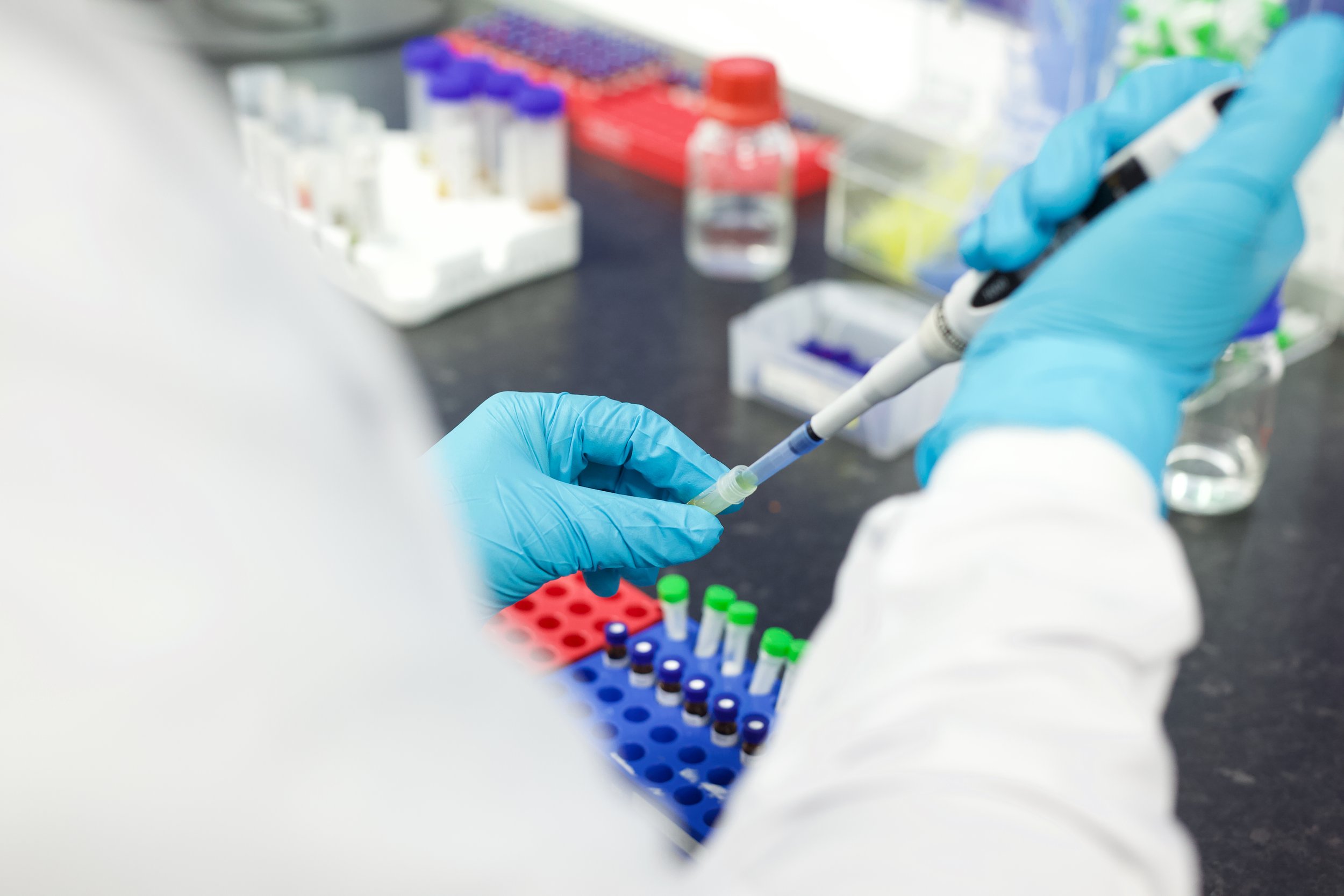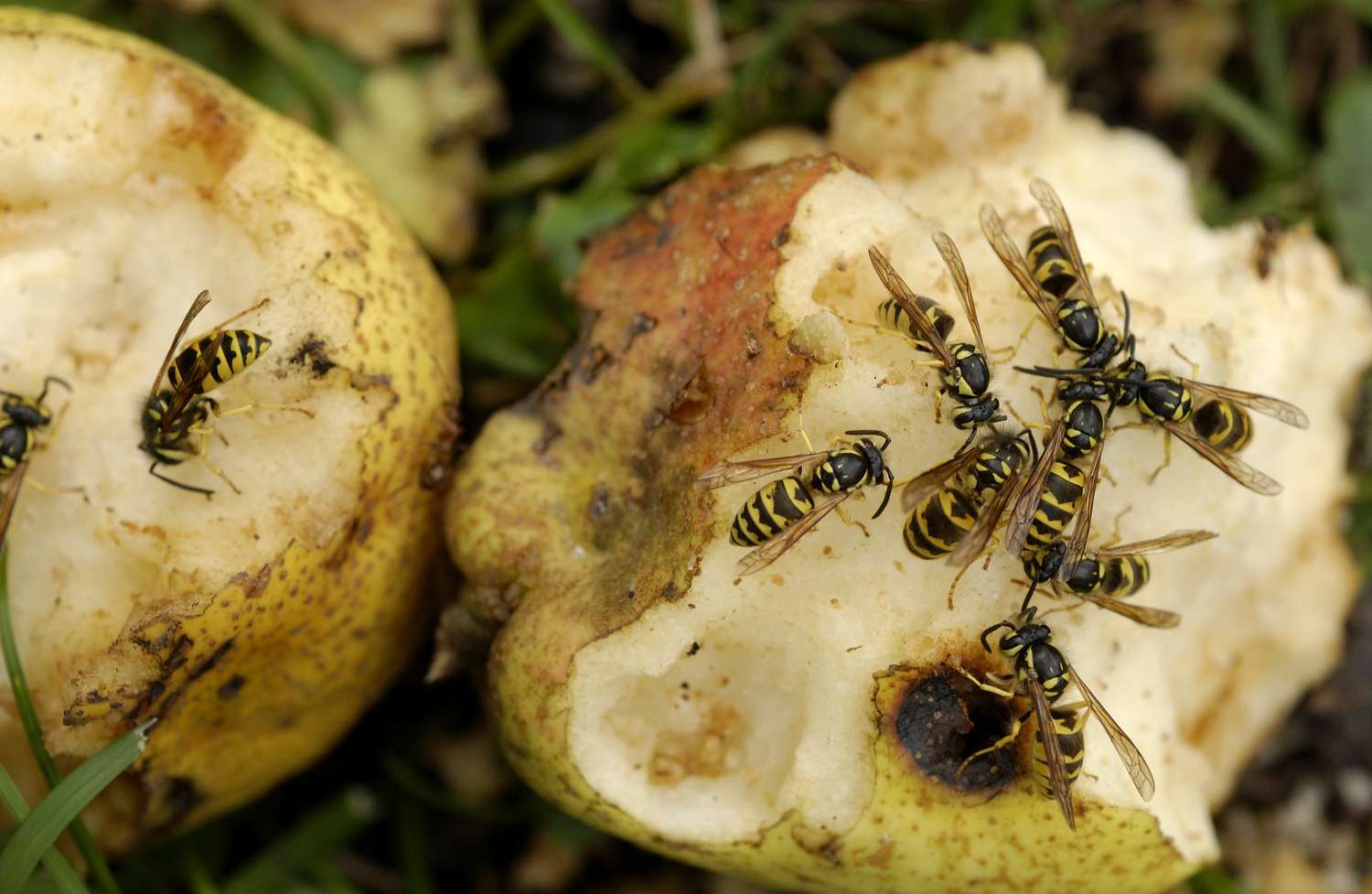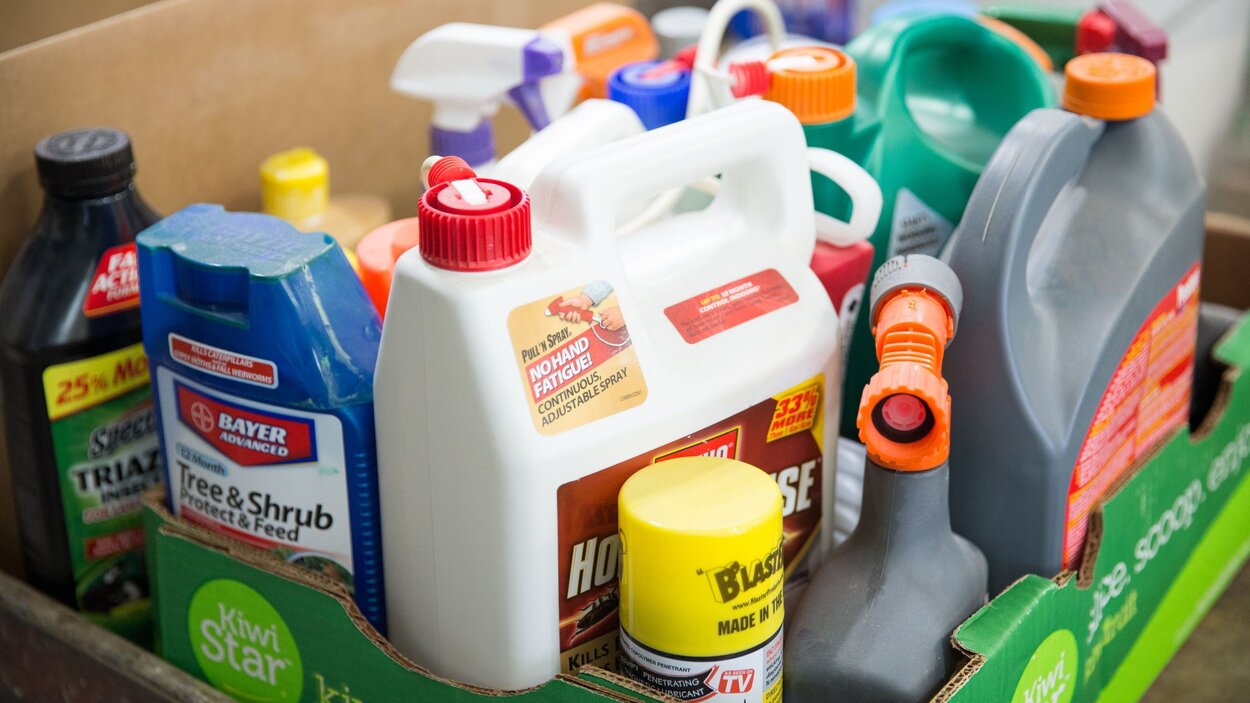Home>Gardening News and Trends>Latest News>How Pesticides Contaminate Food


Latest News
How Pesticides Contaminate Food
Modified: January 22, 2024
Get the latest news on how pesticides contaminate food and the potential health risks. Stay informed and protect your well-being.
(Many of the links in this article redirect to a specific reviewed product. Your purchase of these products through affiliate links helps to generate commission for Chicagolandgardening.com, at no extra cost. Learn more)
Table of Contents
- Introduction
- Definition of Pesticides
- Common Types of Pesticides Used
- How Pesticides Enter the Food Chain
- Environmental Impact of Pesticide Contamination
- Health Risks Associated with Pesticide Residues in Food
- Regulation and Monitoring of Pesticide Levels in Food
- Methods to Reduce Pesticide Contamination in Food
- Conclusion
Introduction
Pesticides play a crucial role in modern agricultural practices, helping to protect crops from pests and increase overall food production. However, the use of pesticides comes with a hidden cost – the potential contamination of our food. The presence of pesticide residues in the food chain has become a growing concern due to its negative impact on both the environment and human health.
Pesticides are chemical substances specifically designed to kill or control pests, including insects, weeds, fungi, and rodents. They are widely used in conventional farming methods to ensure optimal crop yield and quality. However, these chemicals have the capability to persist in the environment, leading to their accumulation in the soil, water, and ultimately, in the food we consume.
There are various types of pesticides used in agriculture, such as insecticides, herbicides, fungicides, and rodenticides. Each type is formulated to target specific pests and disrupt their life cycle. While these pesticides are effective in their intended purpose, they can also pose unintended risks to non-target organisms, including beneficial insects, birds, and even human beings.
Once applied on crops, pesticides can enter the food chain through different pathways. One common route is through direct contact with the plant’s surface, such as leaves and fruits. Pesticides can be absorbed into the plant’s tissues and become systemic, meaning they are present throughout the entire plant, including the parts that are consumed by humans. Another pathway is through soil and water contamination. Pesticides can leach into the ground and contaminate water sources, which can then be taken up by plants or consumed by animals.
Definition of Pesticides
Pesticides are chemical substances that are used to control or eliminate pests, including insects, weeds, fungi, and rodents. They are widely utilized in agriculture, forestry, public health, and even household settings to protect crops, control disease vectors, and maintain public sanitation.
These chemical compounds are formulated with specific active ingredients that target pests by disrupting their biological functions or causing mortality. The effectiveness of a pesticide depends on its mode of action, which can involve interference with the nervous system, metabolic pathways, or reproductive capabilities of the target organisms.
There are several different types of pesticides, each designed to combat specific pests and tailored to different environments. Insecticides, for instance, are used to control insect populations that can damage and destroy crops. They can be further classified based on their specific target, such as organophosphates, pyrethroids, and neonicotinoids.
Herbicides, on the other hand, are used to control unwanted weeds that compete with crops for nutrients, sunlight, and space. These chemicals target the growth and development of plants, hindering their ability to photosynthesize or disrupt their cell membranes. Herbicides can be selective or non-selective, with the former targeting specific types of weeds while leaving crops unharmed.
Fungicides are another category of pesticides used to control fungal diseases that can affect plants and cause yield loss. These chemicals can be applied to crops as preventative measures or as curative treatments, depending on the severity of the fungal infestation. Fungicides can inhibit fungal growth, spore production, or affect the formation of protective structures in fungi.
Rodenticides are chemicals used to control rodent populations, preventing damage to crops, spread of diseases, and destruction of property. These pesticides come in various forms, including baits, traps, or toxicants that are ingested by rodents.
It is worth noting that while pesticides are effective in pest control, their use can also have unintended consequences. Contamination of the environment, including water sources and non-target organisms, is a major concern. Therefore, responsible and judicious use of pesticides, as well as the development of alternative pest management strategies, are crucial to minimize the adverse effects of these chemicals.
Common Types of Pesticides Used
There are several types of pesticides commonly used in agriculture and other industries to control pests and protect crops. Each type of pesticide is designed to target specific pests and provide effective control. Here are some of the most commonly used types of pesticides:
- Insecticides: Insecticides are pesticides used to control insect pests. They can be classified into different groups based on their mode of action. Organophosphates, such as malathion and chlorpyrifos, inhibit the activity of enzymes in the nervous system of insects. Pyrethroids, such as permethrin and cypermethrin, target the nervous system of pests, causing paralysis and eventual death. Neonicotinoids, such as imidacloprid and clothianidin, act on the nervous system of insects, disrupting their feeding behavior and communication.
- Herbicides: Herbicides are pesticides used to control weeds, which compete with crops for resources and can reduce yield. They can be broadly categorized into two types: selective and non-selective herbicides. Selective herbicides target specific types of weeds and leave the crops unharmed. Non-selective herbicides, like glyphosate, kill all vegetation they come into contact with. The use of herbicides has significantly simplified weed control in agriculture.
- Fungicides: Fungicides are pesticides used to control fungal diseases in plants. They can be applied as preventive measures or curative treatments, depending on the timing and severity of the infection. Fungicides work by inhibiting the growth and reproduction of fungi, preventing the spread of diseases. Common fungicides include azoxystrobin, thiophanate-methyl, and copper-based compounds.
- Rodenticides: Rodenticides are pesticides used to control rodent populations. Rats and mice can cause significant damage to crops, spread diseases, and damage infrastructure. Rodenticides are often formulated as baits or toxicants that are attractive to rodents. Common active ingredients in rodenticides include warfarin, bromadiolone, and brodifacoum.
- Bactericides: Bactericides are pesticides used to control bacterial diseases in plants. They work by inhibiting the growth and reproduction of harmful bacteria that can cause crop damage. Copper-based compounds are commonly used as bactericides in organic farming, while synthetic bactericides like streptomycin are used in conventional agriculture.
It’s important to note that the use of pesticides should be done following proper guidelines and regulations to minimize any negative impact on the environment and human health. Additionally, integrated pest management (IPM) practices that combine multiple pest control strategies are being increasingly employed to reduce the reliance on synthetic pesticides and promote sustainable agricultural practices.
How Pesticides Enter the Food Chain
Pesticides can enter the food chain through various pathways, starting from their application on crops to consumption by humans. Understanding these pathways is crucial to recognize the potential risks of pesticide contamination in our food. Here are the main ways in which pesticides make their way into the food chain:
- Direct application: Pesticides are commonly sprayed or applied directly to crops to control pests. When this occurs, a portion of the pesticide remains on the surface of the plant, such as the leaves and fruits. These residues can be transferred to the consumer when the contaminated produce is consumed.
- Systemic absorption: Some pesticides have the ability to be absorbed and distributed throughout the plant’s tissues, becoming systemic pesticides. These substances are taken up by the plant’s roots and transported to all parts of the plant, including the edible portions. This means that even if the pesticide was not directly applied to the surface of the plant, it can still end up in the food we eat.
- Soil contamination: Pesticides can seep into the soil from their application on crops or nearby areas. Once in the soil, these chemicals can persist and leach into groundwater or be taken up by plants. When contaminated crops are consumed, the pesticides present in the soil can enter the food chain.
- Water contamination: Pesticides may also contaminate water bodies through runoff from agricultural fields or improper disposal. Surface water and groundwater can become contaminated with these chemicals, and when used for irrigation or consumed by animals, the pesticides can enter the food chain.
- Residue accumulation: As pesticides are used repeatedly over time, residues can accumulate in the environment. They can build up in the soil, persist in water sources, or bioaccumulate in the tissues of organisms. This means that pesticides that were used in the past can still have an impact on the food chain many years later.
Once pesticides enter the food chain, they can be transferred from plants to animals through consumption. Animals that feed on contaminated plants can accumulate pesticide residues in their tissues. This can include livestock or fish that are later consumed by humans, leading to indirect exposure to pesticides through the food chain.
It’s important to note that regulatory bodies around the world establish maximum residue limits (MRLs) for pesticides in food. These MRLs are set to ensure that the levels of pesticide residues in food are below concentrations that are considered harmful to human health. Regular monitoring and testing are conducted to ensure compliance with these safety standards and protect consumers from excessive pesticide exposure.
Environmental Impact of Pesticide Contamination
Pesticide contamination has significant environmental implications, affecting various aspects of the ecosystems in which they are used. While pesticides serve the purpose of protecting crops and managing pests, their unintended effects on the environment can be far-reaching. Here are some of the key environmental impacts of pesticide contamination:
- Ecological imbalance: Pesticides can harm non-target organisms, including beneficial insects, birds, and aquatic organisms. These chemicals can disrupt the natural balance of ecosystems by reducing populations of beneficial insects like bees and butterflies, which are essential for pollination. Additionally, pesticide runoff into aquatic environments can harm fish and other aquatic organisms, leading to a decline in biodiversity.
- Water pollution: Pesticides can contaminate water sources through runoff from agricultural fields. This runoff can carry pesticides into rivers, lakes, and groundwater, leading to water pollution. The presence of pesticides in water bodies can harm aquatic life and affect the quality of drinking water sources, impacting both human and animal health.
- Soil degradation: Prolonged use of pesticides can degrade soil quality and disrupt soil ecosystems. Some pesticides can persist in the soil for extended periods and accumulate over time, leading to the loss of beneficial microorganisms, earthworms, and other soil organisms that play a vital role in maintaining soil health and fertility.
- Resistance development: Continuous and excessive use of pesticides can contribute to the development of resistance in target pests. Pests that are repeatedly exposed to the same pesticide can develop genetic mutations that make them resistant to its effects. This leads to the need for higher pesticide doses or the use of more potent chemicals, which can further exacerbate environmental damage.
- Impacts on wildlife: Wildlife, including birds, mammals, and amphibians, can be exposed to pesticides through contaminated food sources or direct contact with treated areas. Pesticides can have adverse effects on reproduction, behavior, and overall health of these animals, disrupting natural ecosystems and potentially leading to population declines.
It is important to address these environmental concerns by adopting sustainable pest management practices. Integrated pest management (IPM) approaches aim to minimize reliance on chemical pesticides and focus on prevention, monitoring, and using a combination of pest control tactics. This includes techniques such as crop rotation, biological control, and cultural practices to reduce pest populations and minimize the need for chemical intervention.
Regulatory agencies and governments also play a crucial role in assessing the environmental impact of pesticides and establishing guidelines for their safe and responsible use. Education and awareness programs can help farmers and consumers understand the potential implications of pesticide use and promote more sustainable practices to protect the environment and preserve biodiversity.
Health Risks Associated with Pesticide Residues in Food
The presence of pesticide residues in food has raised concerns about potential health risks for consumers. While regulatory bodies establish maximum residue limits (MRLs) to ensure safe levels of pesticide residues in food, the long-term effects of chronic exposure to low levels of pesticides are still a subject of scientific investigation. Here are some of the health risks associated with pesticide residues in food:
- Acute poisoning: High levels of pesticide exposure, either through accidental ingestion or occupational exposure, can lead to acute poisoning. Symptoms can range from nausea and headaches to more severe effects, such as respiratory distress, neurological damage, or even death. However, acute poisoning cases are relatively rare as regulatory measures aim to prevent these incidents.
- Endocrine disruption: Some pesticides have been found to have endocrine-disrupting properties, meaning they can interfere with hormone systems in the body. These chemicals have the potential to disrupt normal hormone regulation, leading to adverse effects on reproductive health, development, and overall hormonal balance.
- Cancer risk: The International Agency for Research on Cancer (IARC) has classified several pesticides as possible or probable carcinogens. Prolonged exposure to these substances, even at low levels, may contribute to an increased risk of certain types of cancer, including liver, lung, and bladder cancer.
- Neurotoxicity: Some pesticides, such as organophosphates and organochlorines, are known to have neurotoxic effects. Chronic exposure to these chemicals may lead to neurological disorders, including cognitive impairments, developmental delays in children, and an increased risk of neurodegenerative diseases such as Parkinson’s disease.
- Reproductive effects: Pesticide exposure has been associated with reproductive health issues, including fertility problems, birth defects, and disruptions in the normal development of the reproductive system. Certain pesticides, such as organochlorines and some herbicides, have been linked to increased rates of miscarriages and adverse effects on fetal development.
- Allergies and sensitization: Pesticides can trigger allergic reactions in some individuals, particularly those who have sensitivities or pre-existing allergies. These reactions can range from mild skin irritations to severe respiratory distress and anaphylactic shock.
It’s important to note that the potential health risks associated with pesticide residues depend on various factors, including the specific pesticide, the level of exposure, and individual susceptibilities. While regulatory agencies set MRLs to minimize health risks, some experts argue that chronic, low-level exposure to pesticide residues, even below regulatory limits, may have cumulative and long-term effects on human health.
To mitigate health risks, consumers can take steps to minimize their exposure to pesticide residues. This includes washing fruits and vegetables thoroughly, peeling when appropriate, and opting for organic produce when possible. Additionally, supporting sustainable agricultural practices and advocating for stricter regulations on pesticides can contribute to reducing the risks of pesticide residues in our food.
Regulation and Monitoring of Pesticide Levels in Food
In order to protect public health, regulatory bodies around the world have established guidelines and measures to regulate and monitor pesticide levels in food. These regulations aim to ensure that pesticide residues in food are within safe limits and do not pose significant health risks to consumers. Here are some key aspects of the regulation and monitoring of pesticide levels in food:
- Maximum Residue Limits (MRLs): Regulatory agencies, such as the U.S. Environmental Protection Agency (EPA) and the European Food Safety Authority (EFSA), set specific MRLs for different pesticides in various food commodities. MRLs represent the maximum allowable concentration of pesticide residues in food that is safe for human consumption. These limits are determined through rigorous scientific assessments and take into account factors such as toxicology, exposure levels, and dietary habits.
- Pesticide Registration: Before a pesticide can be used in agriculture, it must go through a registration process with regulatory agencies. This involves a comprehensive evaluation of the pesticide’s safety, efficacy, and environmental and human health impacts. All registered pesticides are assigned specific uses and application guidelines to ensure proper and safe use.
- Residue Testing: Regulatory agencies, along with food safety authorities, conduct regular monitoring programs to test for pesticide residues in food samples. These tests analyze a wide range of commodities to ensure compliance with MRLs. Samples are collected from different sources, including farms, markets, and import shipments, and are analyzed using highly sensitive analytical techniques.
- Enforcement Actions: If pesticide residues are found to exceed the established MRLs, regulatory agencies may take enforcement actions to protect public health. This can include issuing warnings, fines, product seizures, or even banning the use of certain pesticides. Food businesses and farmers are required to adhere to these regulatory measures to ensure the safety of their products.
- International Standards: International organizations, such as the Codex Alimentarius Commission, establish harmonized standards for pesticide residues in food. These standards provide a framework for developing national regulations and facilitate international trade by promoting consistent safety standards worldwide.
- Consumer Education: Regulatory agencies and food safety authorities play a crucial role in educating consumers about pesticide residues in food. This includes providing information on proper food handling and washing techniques to reduce pesticide exposure, as well as promoting awareness about organic and pesticide-free food options.
It’s important to note that the regulatory framework for pesticide regulation and monitoring continues to evolve as new scientific evidence emerges. Ongoing research aims to better understand the long-term effects of pesticide exposure and refine safety standards. Additionally, consumer demand for safer and more sustainable food production practices has led to increased scrutiny and pressure for stricter regulations on pesticide use.
Overall, the regulation and monitoring of pesticide levels in food are vital processes that help safeguard public health and ensure the safety of our food supply. Continuous efforts in research, testing, and regulation are necessary to address emerging concerns and protect consumers from potential risks associated with pesticide residues in food.
Methods to Reduce Pesticide Contamination in Food
Reducing pesticide contamination in our food supply is a complex challenge that requires a multi-faceted approach involving various stakeholders, including farmers, regulators, and consumers. Here are some key methods and strategies that can help minimize pesticide contamination in food:
- Integrated Pest Management (IPM): Implementing IPM practices can significantly reduce the reliance on chemical pesticides. IPM focuses on methods such as crop rotation, biological control, and the use of resistant crop varieties to manage pests effectively. By using a combination of strategies, farmers can reduce pest populations and minimize the need for pesticide applications.
- Safe and Responsible Pesticide Use: When pesticides are necessary, it is essential to use them safely and responsibly. This includes following recommended dosage rates, adhering to proper application techniques, and avoiding unnecessary or excessive use. It’s crucial for farmers to receive training and education on safe pesticide handling to minimize the risk of contamination.
- Pre-harvest Interval (PHI): Respecting the pre-harvest interval is crucial to ensure that pesticide residues have sufficient time to degrade before crops are harvested. Farmers should strictly adhere to the recommended PHI for each pesticide used, giving enough time for the residues to reach safe levels before the crops enter the food supply.
- Good Agricultural Practices (GAPs): Implementing GAPs helps ensure that food is produced, processed, and handled using safe and sustainable practices. This includes proper storage and disposal of pesticides, regular maintenance and calibration of application equipment, and appropriate record-keeping to track pesticide use.
- Organic Farming: Organic farming practices promote the use of natural methods and substances, avoiding synthetic pesticides and fertilizers. Choosing organic products reduces the risk of pesticide contamination in food. Organic standards also require farmers to follow specific guidelines regarding pest management, emphasizing prevention and non-chemical approaches.
- Consumer Awareness and Education: Educating consumers about pesticide residues in food helps raise awareness and empowers individuals to make informed choices. Consumers can opt for organic produce or practice proper washing and peeling techniques to reduce pesticide exposure. Supporting local farmers and purchasing food from trusted sources can also encourage sustainable and responsible farming practices.
- Research and Innovation: Continued investment in research and innovation plays a vital role in developing alternative pest control methods. This includes the development of pest-resistant crop varieties, biopesticides, and innovative technologies that can reduce pesticide use while maintaining crop productivity. Government funding and collaboration between the scientific community, agricultural industry, and policymakers are crucial in driving these advancements.
By adopting these methods and strategies, we can work towards reducing pesticide contamination in our food supply. Collaboration between farmers, regulators, consumers, and other stakeholders is essential for the successful implementation of these approaches and for promoting a more sustainable and resilient food system.
Conclusion
Pesticide contamination in our food supply is a serious concern due to its potential environmental and health impacts. However, through a combination of responsible pesticide use, rigorous regulation, and consumer awareness, we can work towards reducing pesticide contamination and ensuring the safety of our food.
By following integrated pest management (IPM) practices, farmers can minimize their reliance on chemical pesticides and adopt more sustainable and environmentally friendly pest control strategies. Safe and responsible pesticide use, including adhering to recommended dosage rates and application techniques, also plays a critical role in reducing contamination levels.
Regulatory bodies establish maximum residue limits (MRLs) to ensure that pesticide levels in food are below concentrations that pose significant health risks. Regular monitoring and testing programs are conducted to enforce these safety standards and protect consumers from excessive pesticide exposure.
Consumer awareness and education are key drivers for change. By understanding the potential risks of pesticide residues in food, consumers can make informed choices, such as opting for organic produce or practicing proper food handling techniques. Supporting sustainable farming practices and demanding stricter regulations can also contribute to reducing pesticide contamination.
Furthermore, ongoing research and innovation are important in developing alternative pest control methods that reduce dependence on chemical pesticides. This includes the development of pest-resistant crop varieties, biopesticides, and innovative technologies that can minimize environmental impact while ensuring crop productivity.
In conclusion, addressing pesticide contamination in our food requires a collective effort from farmers, regulators, consumers, and the scientific community. By adopting sustainable and responsible practices, promoting consumer awareness, and driving innovative solutions, we can minimize pesticide contamination and maintain a safe and resilient food supply for generations to come.









